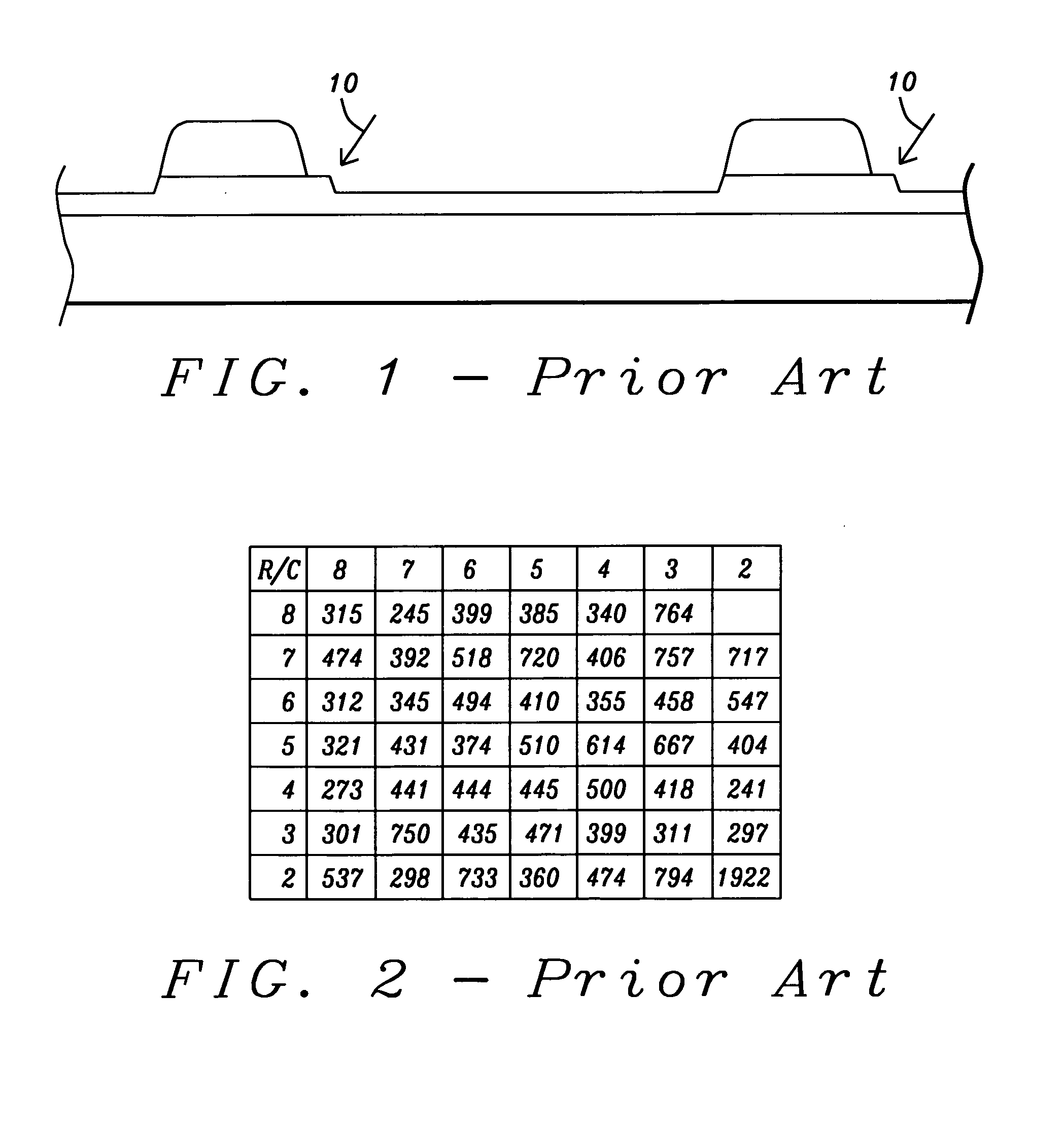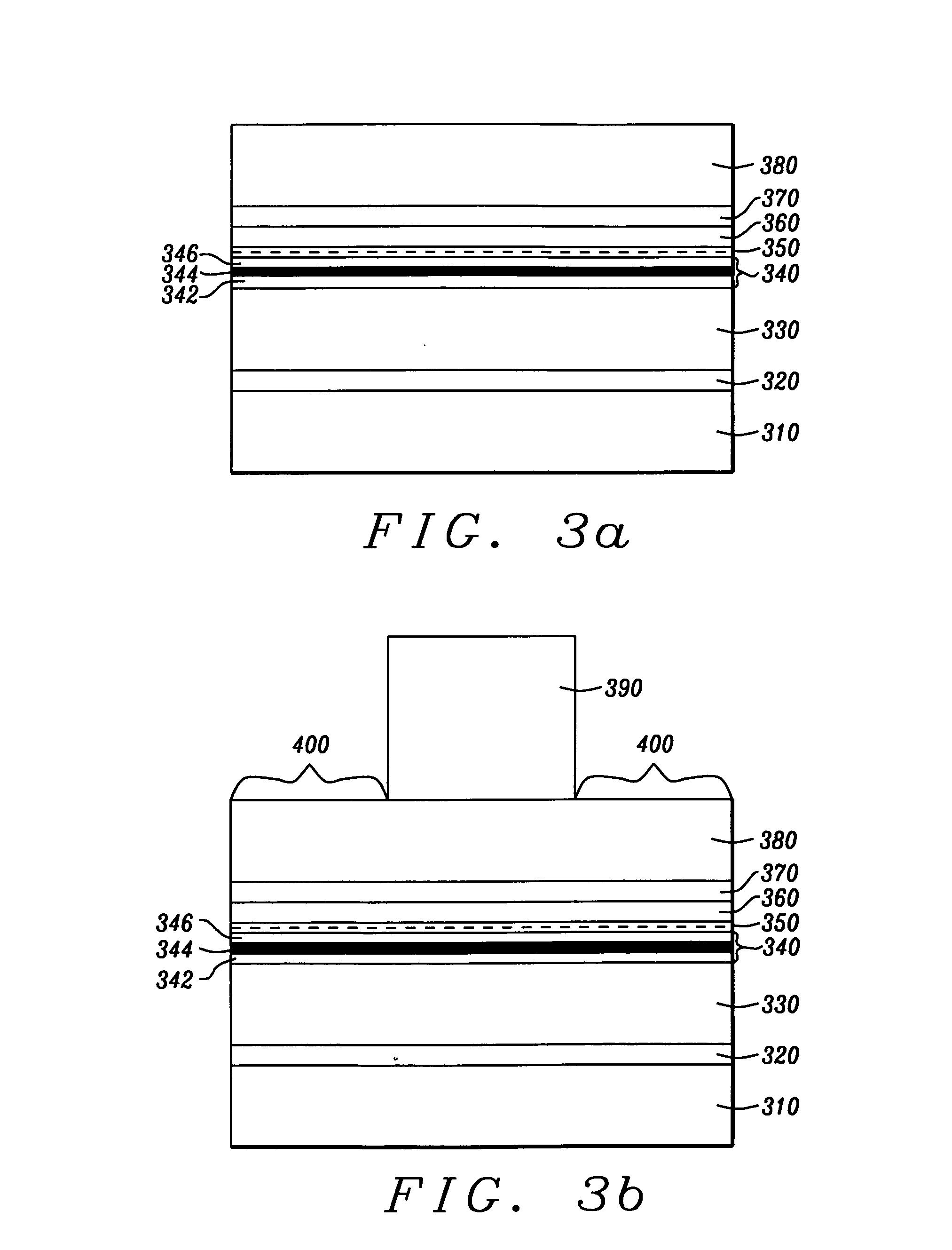Method of MRAM fabrication with zero electrical shorting
- Summary
- Abstract
- Description
- Claims
- Application Information
AI Technical Summary
Benefits of technology
Problems solved by technology
Method used
Image
Examples
Embodiment Construction
[0042]The preferred embodiment of the present invention is the formation of a patterned MTJ stack using a reactive ion etch (RIE) and the production, thereby, of an MTJ cell that is free of electrical shorting and suitable for use in an MRAM array.
[0043]Referring to FIG. 3a, there is shown a schematic vertical cross-sectional view of a horizontally multi-layered MTJ stack of a material structure, dimensions and configuration to be effectively patterned by the method of the present invention. The lower layer (310) is a bottom electrode for the purpose of injecting a current. On this electrode will be formed a horizontally multi-layered magnetically pinned structure that comprises a seed layer (320) of NiCr formed to a thickness between approximately 30 and 60 Angstroms, an antiferromagnetic layer (330), typically of MnPt formed to a thickness between approximately 120 and 300 Angstroms, but which can be IrMn, MnNi or any intrinsic antiferromagnetic material that can exchange couple w...
PUM
 Login to View More
Login to View More Abstract
Description
Claims
Application Information
 Login to View More
Login to View More - R&D
- Intellectual Property
- Life Sciences
- Materials
- Tech Scout
- Unparalleled Data Quality
- Higher Quality Content
- 60% Fewer Hallucinations
Browse by: Latest US Patents, China's latest patents, Technical Efficacy Thesaurus, Application Domain, Technology Topic, Popular Technical Reports.
© 2025 PatSnap. All rights reserved.Legal|Privacy policy|Modern Slavery Act Transparency Statement|Sitemap|About US| Contact US: help@patsnap.com



